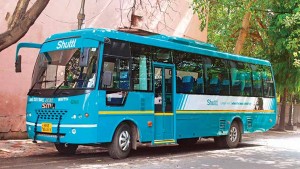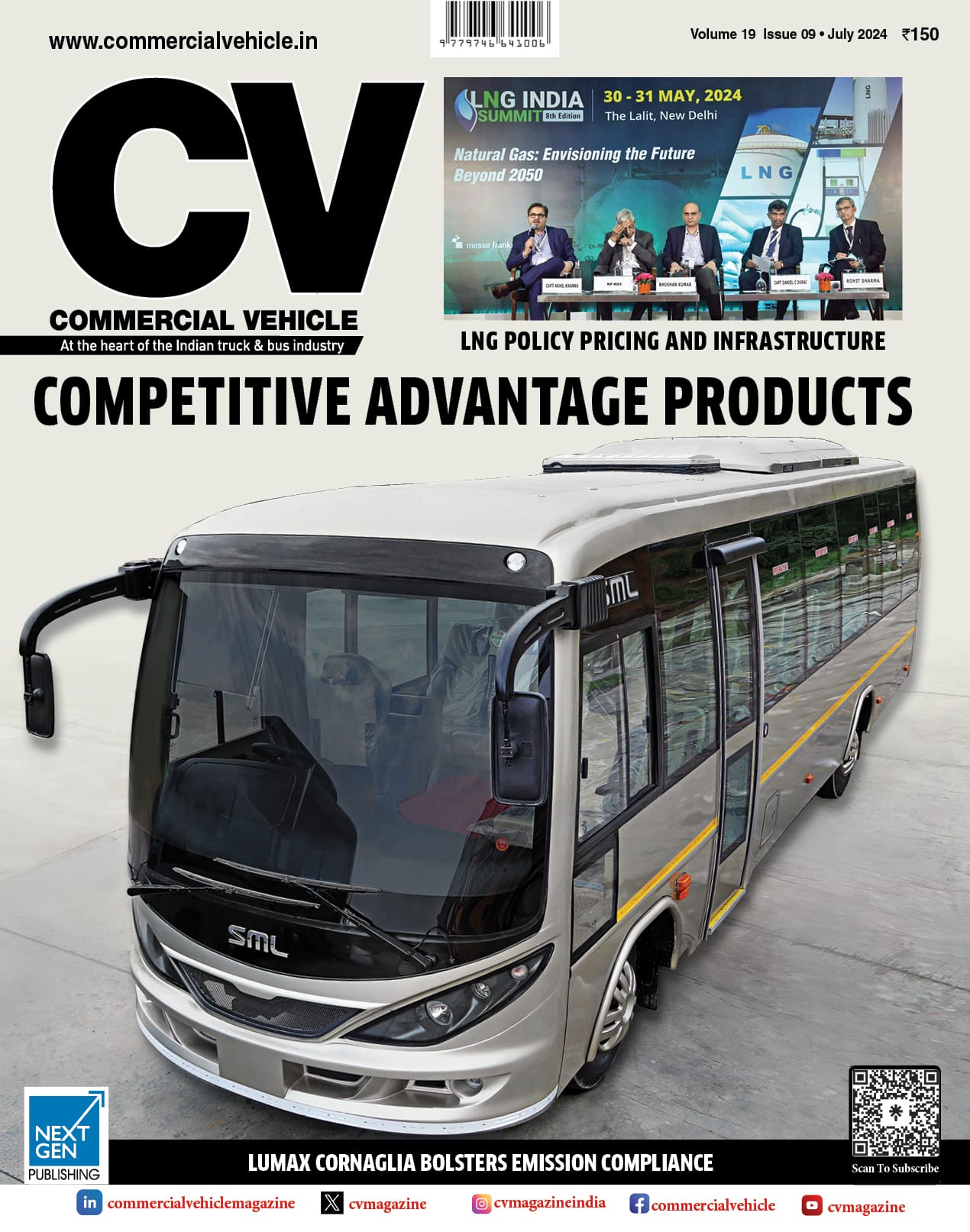Bus aggregator, Shuttl, is promoting ‘SAFE’ commute to attract more footfall.
Story by: Anirudh Raheja
With office commute a tough challenge in Indian cities for many, aggregators are finding a calling. Even as Uber and Ola strive to expand the boundaries of their business by looking at buses, three-wheelers and two-wheelers, the need for safe travel is most felt. After the reporting of some untoward incidences in various medias, the need for safe commute has been gathering stream, especially among women. Finding a calling, bus aggregator Shuttl has launched ‘SAFE’. An acronym for Secure Anxiety Free Experience, ‘SAFE’ aims at women commuters as part of Shuttl’s endeavour to provide a safe and secure commuting experience to all and the sundry. A prototype that will be applied in the ‘beta’ form in Delhi National Capital Region to start with, ‘SAFE’ contains multiple safety tools for passengers. Leveraging technology and data according to Shuttl founders Amit Singh and Deepanshu Malviya, ‘SAFE’ is designed to transform the way Indians commute. Designed to make commuting safe and secure, ‘SAFE’ will roll out over the next three qurters. Tailored to address the complex travel requirements of commuters in Delhi NCR, ‘SAFE’, according to Sing, will touch each of the 20,000 rides the company undertakes per day.
A venture of Super Highway Labs, Shuttl is funded by Lightspeed Ventures, Sequoia Capital and Times Internet. The company has tied up with 250 operators, and operates a fleet of 450 buses on 50 routes. Building routes one at a time to overcome the complexity posed by Delhi NCR, Shuttl worked closely with JCBL and SML Isuzu to develop ‘SAFE’. Developed at JCBL under SML Isuzu according to Singh, ‘SAFE’ is a pilot midi bus. It is built as per the specifications proposed by Shuttl engineers, and with a prime aim to deliver a safe ride to the commuters. Expressed Malviya, “Traditional understanding of data as text and numbers has gone through a paradigm shift with the advent of ‘Machine Learning’ and ‘Internet of Things (IoT). By using image and sensor data we are now taking a big leap forward in deriving intelligence to deliver a safe experience for our customers.” In the process, Shuttl is also looking at lower costs. The company resorted to local manufacturer to lower costs. It roped in Raspberry Pi 3, Open CV, DLIB, and Arduino Uno for tech updates. Pocket size systems like Raspeberry Pi are known to cost not more than Rs.2,500.
Safe and secure
Hosting numerous features for an authentic trip, ‘SAFE’ was developed in house. The system starts operation according to Singh from the bus captain. The driver cockpit, he mentioned, has been equipped with an alcohol sensor, placed in close proximity to the driver. The alcohol sensor will cut off the ignition the instance it detects any alcoholic substance. An audible warning is raised. To further enhance security, camera in the driver’s cabin could be installed. The camera will monitor the driver’s body language. It will check if he is feeling drowsy, or is distracted by a smart phone; is not paying enough attention on the road. As part of ‘SAFE’, the company is also using technology to identify the driver. This is to avoid any directional flaw. Drivers understanding Hindi or English will be undergo route training and behaviour training. If the systems observes that the driver is drunk, it will have the bus terminate the route at the next stop. Tying up with OnGrid and India Stack to authenticate drivers, Shuttl is keen to incorporate changes in ‘SAFE’ to make it even more effective and fool proof.
Authentication
Expressing that the face is the password, Singh averred, “The system necessitates facial recognition of the passenger expected to board the bus.” To make the procedure devoid of friction, a camera has been fitted at the entry point. It makes certain that the right passenger has boarded the bus. Once the picture of the commuter is uploaded, passenger verification will eliminate any possibility of bus overload and ticket check while boarding, said Singh. He stated, “Since we have face detection in place, we can use ‘Aadhar API’ to authenticate the user and get him on-board without any human intervention. This would eliminate the need to book a ticket, or a slot.
The ‘SAFE’ bus has also been equipped with a CCTV camera. It could provide a live feed. In case the passenger is keen that he or she be tracked by his or her dear ones, all that he or she has to do is to share a URL link. The URL link shared with passenger can thus be traced for live footage by friends and family. In case of any emergency, the Shuttl App. SOS feature could be used to raise an alarm. A panic button has also been placed near the front door for physical access. The ‘homecheck’ feature ensures a call back confirmation for a safe arrival at home.
Convenience
Shuttl ‘SAFE’ buses offer free ‘Wi Fi’ services to those who are on board. Commuters can thus allow them to under take personal work. The buses could be also fitted with a television screen for on board entertainment. For privacy, commuters are supplied with personal earphone jacks. They could control the level of engagement and sound. “Earphones will not only keep the sound levels low inside the bus, they will also provide commuters with a space of their own,” said Singh. To be rolled out in a phased manner, Shuttl is optimistic about ‘SAFE’. It is confident of its acceptance. Both, Singh and Malviya, are of the opinion that ‘SAFE’ should be accepted in Delhi NCR first. Expansion of ‘SAFE’ to other cities will follow once the technology is found relevant in the Delhi NCR market. “Building a mass system is quite a task. Add to it the task of operating a bus that is used by 40 people, and it only becomes more complex, signed off Malviya.
Q. When will ‘SAFE’ services take-off?
A. Emergency tool kits like SOS and ‘homecheck’ will be rolled out immediately. Driver authentication will follow soon after. It will be six months before every feature is rolled out. Like any other app., one could register for authorisation. In case of facial recognition, we have a fall back mechanism. We also have a sound-based technology that we are using for commuter authentication. There is a sound that is emitted by the mobile phone that is detected by the driver’s phone. Authentication is thus accomplished.
Q. Such technologies come at a cost. Does the commuter end up with a burden?
A. Like the face recognition algorithm, many technologies are software-based. It is the same with the one that monitors the driver behaviour. To keep the costs low, we scale up the technologies to a certain level. It is the same with the hardware. Costing no more than the cost of a mobile phone, it will not make much difference over the lifetime of an asset.
Q. How big is your fleet?
A. We influence the purchase of buses, but do not own them. All the buses that we engage are run by third party operators. These include 30-, 40- and 50- seat buses depending on the route that they take. We have long term agreement with those who own these buses and maintain them. We have tied up with them for a periodic payment, which has nothing to do with the number of commuters taking the bus and the fare we are charging. We influence the bus specifications as per our requirement. This is in terms of seats, AC power, charging points, and more. Since most OEMs already offer most of the specifications that we require, it serves us to tie up with them. Part of our requirement includes bigger windows and higher capacity air conditioners.
Q. Do you insist on a separate driver cabin?
A. There are certain buses where the driver cabin is inaccessible to passengers. In certain buses like Travelers, the driver and commuters are part of the same saloon. We call for regular feedback from commuters. He or she can speak out about any issue faced. If the feedback involves driver misbehavior, we immediately appraise the our vendor of the same.
Q. For technologies, what kind of an association are you looking at?
A. We have associated with OnGird for Aadhar-based verification of the drivers, and for police verification. We have developed a three-tiered training module for the drivers. He should be able to understand and use our apps. He should follow the right route; behave and be sensitive to the needs of the commuters. He should know what action to take in case of an emergency We conduct refresher training and audits to ensure the driver offers a good service.
Q. How do you chalk out the routes?
A. We keep increasing the frequency, and the span of our buses as per the demand. Some of our vendors have grown with us. They have grown from having one bus when they joined us. I believe that the 30-to 35-seat buses make for good mathematics. They do good speeds, and are comfortable. We have many 40-seat buses too. We are currently working with 250 vendors. They have been supporting us with ample fleet. We are currently helping them only to procure more buses and build up our existing system. So we are looking forward to grow strongly. For route engineering, we have building up data from Google maps. We are tying up with telecom companies to design routes. We have been able to build an algorithm which allows us to design a network such that we are catering to all the demand pockets. We look at data in detail so that we are able to iterate on the route. If we feel that the pick-up point is not working then we could change it after a week based on customer feedback. It doesn’t happen such that a route will start after watching that there is much crowd at Dhaula Kuan. For any route to begin, it has to be supported by data.
Q. What made you to opt for alcohol detection system?
A. We integrated alcohol detection system into ‘SAFE’ to enhance safety and security. If the driver tries to switch off the system or tried to tamper with it, we are immediately informed. It may not be possible for us to monitor 450 driver cabins at all-tome, or in one go, what is possible for us to do is to get a live feed. If a passenger wants to monitor the driver it is possible for him or her to do so. If any anomaly is detected, our team takes steps to recover it.
Q. Awareness about the routes Shuttl runs seems to be lacking. Any steps you are taking to increase awareness?
A. The nature of the business that we are in is of the supply constraint type rather than of the demand constraint type. When we launch a route, we do some ground activation initially. Post that it is largely organic in nature, and accompanied with a referral channel that we have on our app. When people tend to see our buses in their area, they tend to load our app. So these are the channels that are working for us. Wherever we see that there is a lack of demand, we use digital marketing to attract commuters. The way we see it, a city like Delhi needs many more buses than it has. When we will come to operate 1500 buses or more, our visibility will be much higher. The need to convey that such a service exists will no longer be there. Interestingly, people tend to find us rather than we finding them. Our challenge is not only get more buses, but to get better routes and coverage.
Q. It should be a tough business?
A. It is a tough business. The pool ride business of cab operators does not effect us since they operate for short distances. There are certain areas where we lock horns with them. Those areas are limited. What we are doing is targeting people who will leave their cars behind and ride with us.
Q. Aren’t regulations proving to be hard to navigate past?
A. The sad part that we are witnessing is terming a service illegal. It is not illegal. It is compliant with the Motor Vehicle Act, and with the Contract Carriage Act. We need to maintain a passenger list as per the contract carriage. For the safety program, that was the concept we worked with from the very start. The way to look at it is that there is a lack of understanding. Awareness is needed. We hope that awareness will be achieved at some point. The fact is, commuters are benefiting from the service that we offer. Rules should be framed to encourage such businesses. At the end of the day we are trying to give people a safe commuting medium. We would like them to leave their cars behind. This will reduce pollution. We are aware that it takes time to understand technology. The Act at no point says that there is a need to maintain a physical list. Cash transactions were restricted. Ticketing was pointed out at. We work on a subscription-based model. Multiple stops was pointed out, which again is not listed under the Contract Carriage Act. School buses cannot operate with a single stop.





























